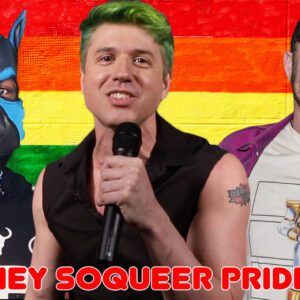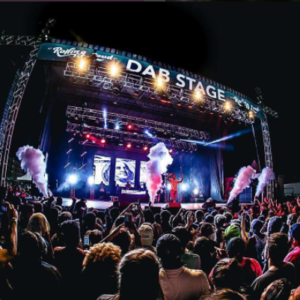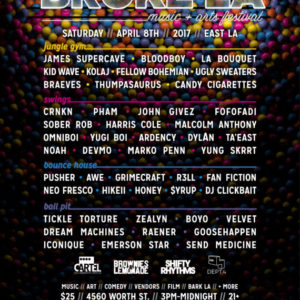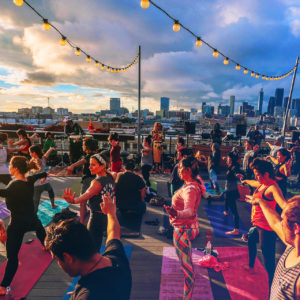 View Winners →
View Winners → 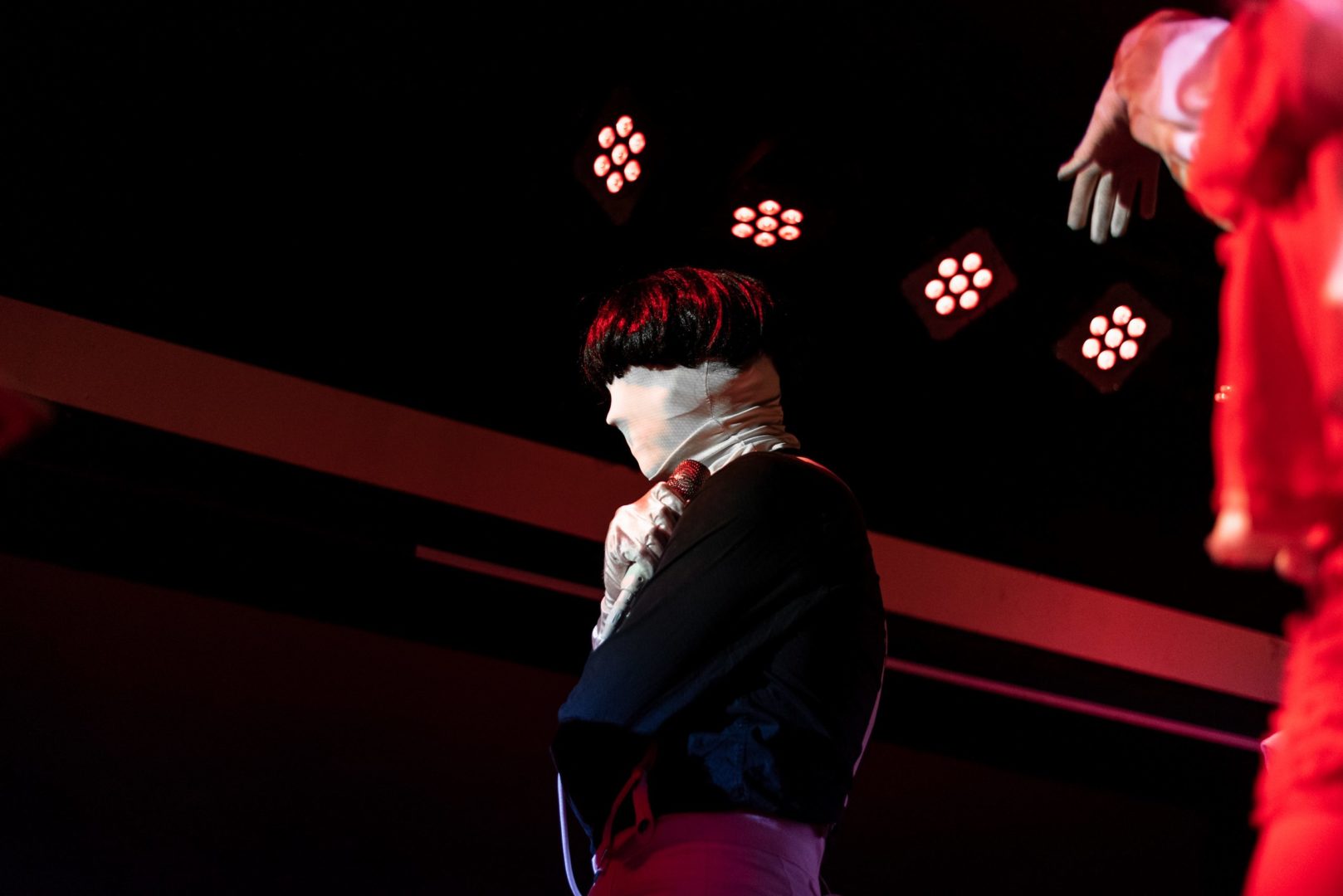
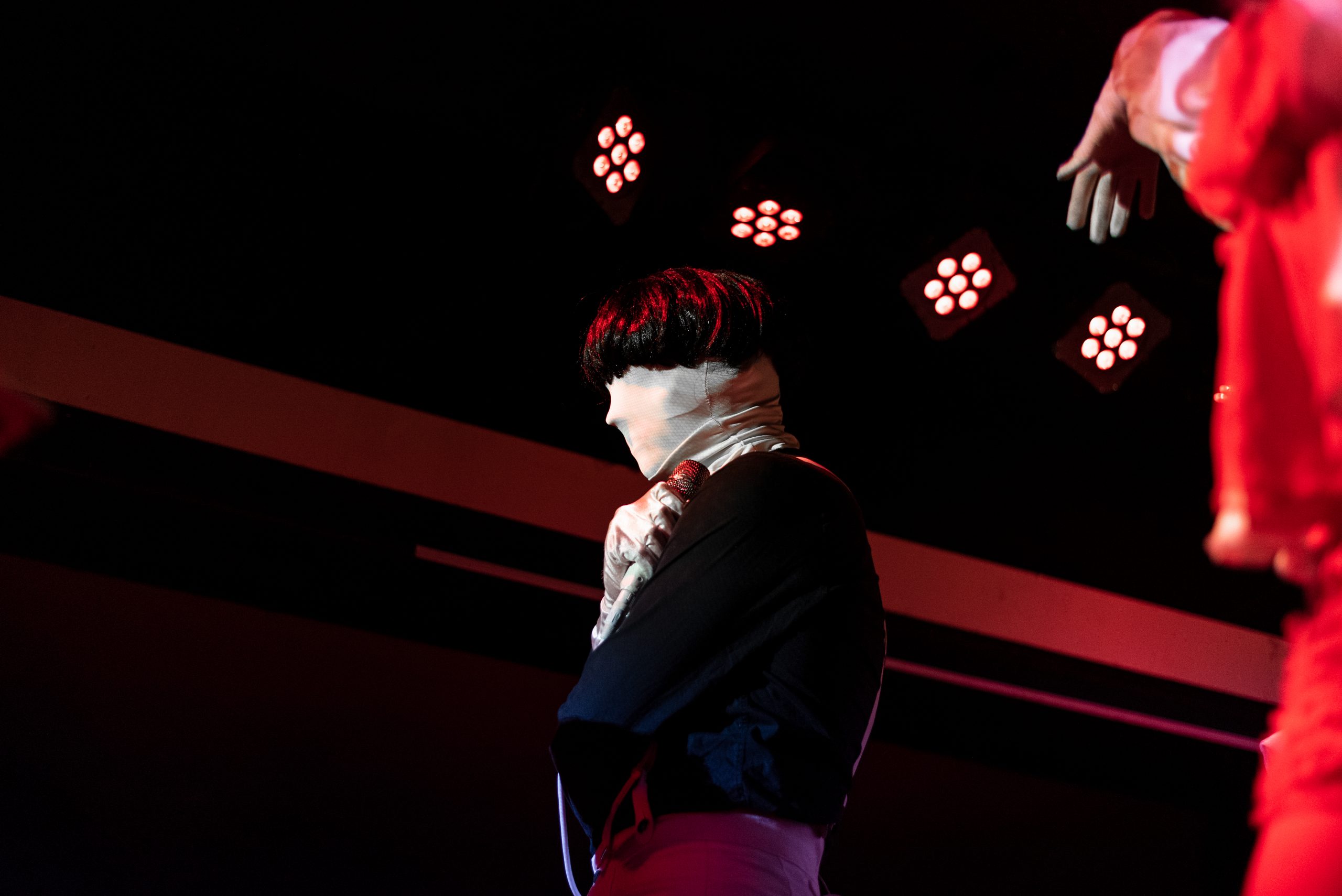
Photo by Geffen Shichor.
Toying with perception and “personability” (in the most literal sense) Jonathan Bree and his band enter the Soda Bar stage as an uncanny force, donned in costumes that I can only describe as Blumhouse made avant-garde. Bree, and his four-person accompaniment, fill the stage dressed immaculately, entirely in white—bar Bree’s own singular black button-up accent. Each male member is shrouded in a stark white ski mask covering the entirety of their visage, forming a sea of mannequins in mod-inspired wigs and satin gloves, enveloping the stage in an eerie backdrop of detachment.
The women, also in virginal white, gendered by their pigtail wigs and bonnets, ruffled lingerie bottoms and peplum tops stand next to Bree, front and center, their eyes the only visible facial feature on the stage as they peer out into the audience through two unsettling holes cut in the mask.
The ghostly scene set by the less-than-human costumes is then immediately aggravated by the opening number, the titular track off Bree’s most recent album release, Sleepwalking. The song begins with a steady, live beat, tapped out by a startlingly static drummer. As the backing builds, the women, in their Little House on the Prairie meets Victorian lingerie section get-ups, begin to dance in perfect time, both with the music and with each other, only furthering the set’s uncanny mood.
https://www.instagram.com/p/B4sb66ApHFS/
Center stage, Bree himself stands devoid of any visible skin, waiting and perfectly still. Raptured by the two-woman ballet, the audience is awoken by Bree’s characteristically cool lyrics, remarkably not muffled by his equally characteristic mask. Calm and collected, Bree croons out “Though I’m degenerate, he’s the fool who’s going to bore you to death,” as if parodying his own apathetic demeanor.
Bree then moves from “Weird Hardcore” to “Say You Love Me Too,” where one of the dancers, now singer, opens the track (originally featuring Clara Viñals) while the other dancer keeps time with a set of (unsurprisingly) white maracas. The song builds into one of the most intimate, yet bizarre, moments of the show as Bree and the woman trade microphones, as if feeding each other the first bites of a wedding cake, while singing “Say you love me too” to one another through their veils, simultaneously estranging and increasing their intimacy.
The following tracks, including “Waiting on a Moment” and “Blur,” are markedly more upbeat, punctuated by “Valentine,” a dreamy number wherein the cute factor of the mannequin-esque dancers verges on the marionette. Throughout it all, Bree remains consistent, the audience dancing and singing along as he paces the stage, arms crossed, surveying the audience as if the crowd were his students and the show a lecture. “Valentine” closes with Bree’s most idiosyncratic display of the night as he slowly plucks entire rosebuds from a bouquet and flicks them, nonchalantly, into the crowd. Bree, the audience’s unrelenting yet detached valentine, plays with the kitsch elements of the romantic motif in direct contrast with the clinical and depersonalized costuming—a potential nod to the perils of postmodern love.
Transitioning into “There is a Sadness,” feels almost comically parodic, as Bree, doused in ivory tones, sings about “dying babies in Africa,” a move wherein it remains unclear whether the aim is simply weirdness for weirdness’s sake or some elevated social commentary. This diversion is quickly forgiven by the upbeat “You’re So Cool” and “Fuck It,” which are, simply put, two of Bree’s most dance-worthy and energetic songs—not that Bree’s own stoic stage presence ever reflects this shift.
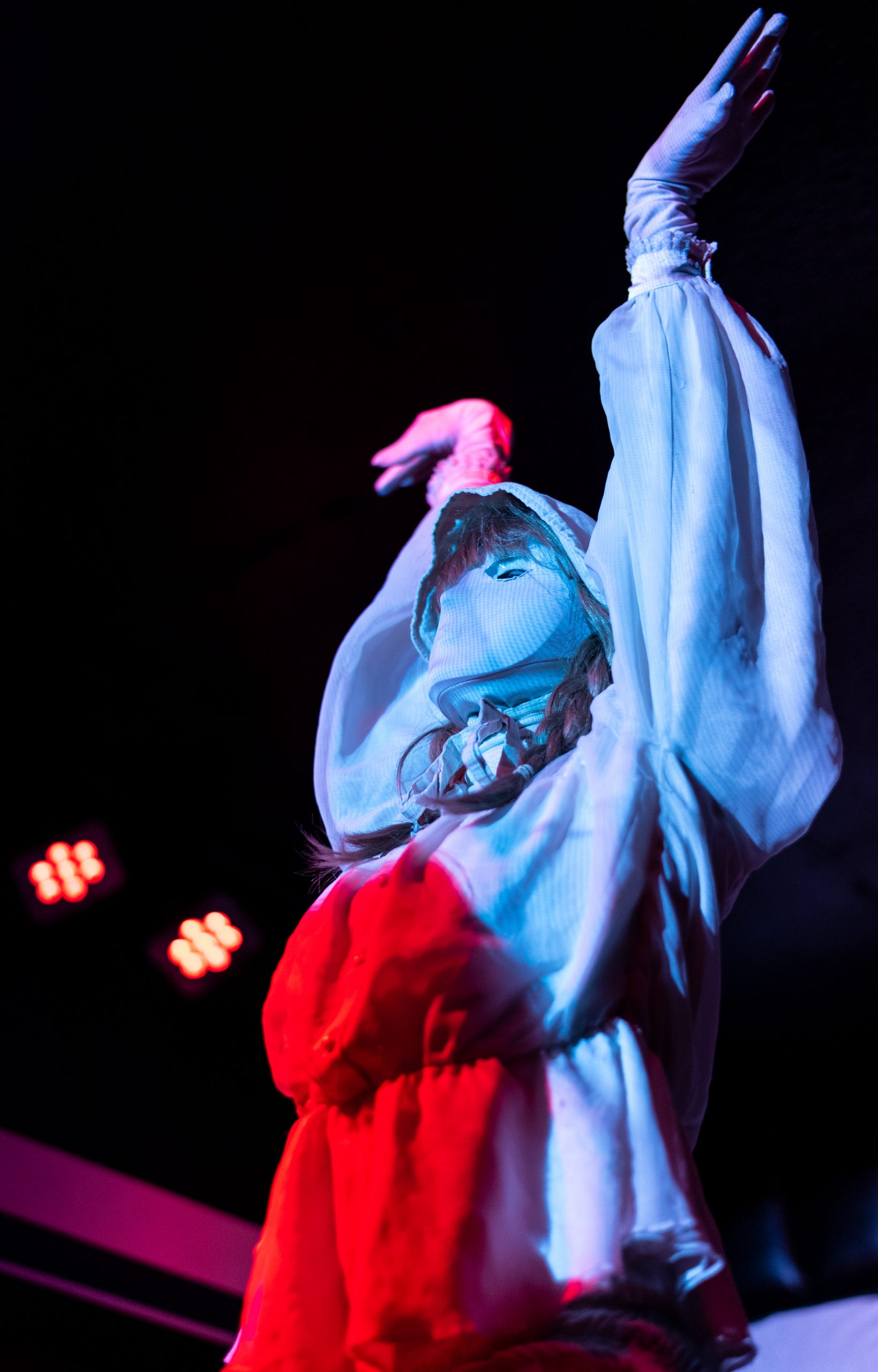
Photo by Geffen Shichor.
Bree then closes with “The Primrose Path,” the title track of his 2013 release, a conclusion which not only marks the end of the evening but also the only moment in which Bree himself comes close to emoting on stage in a singular, but emphatic, head nod. Having remained silent between songs all night, Bree exits with an air-blown kiss, from mesh ski mask to stain gloved fingertips. As the proverbial curtains close, Jonathan Bree leaves the audience stranded and awed in his eerie wake.
The show itself feels nestled in the space between concert and art performance piece, culminating in an experience unlike any other. It’s a performance that forces you to think beyond the music itself and into the boundaries of permeability between art and artist, and while I’d never be able to recognize Bree on the street to ask for an autograph, I’m certain I will be following his career for years to come.
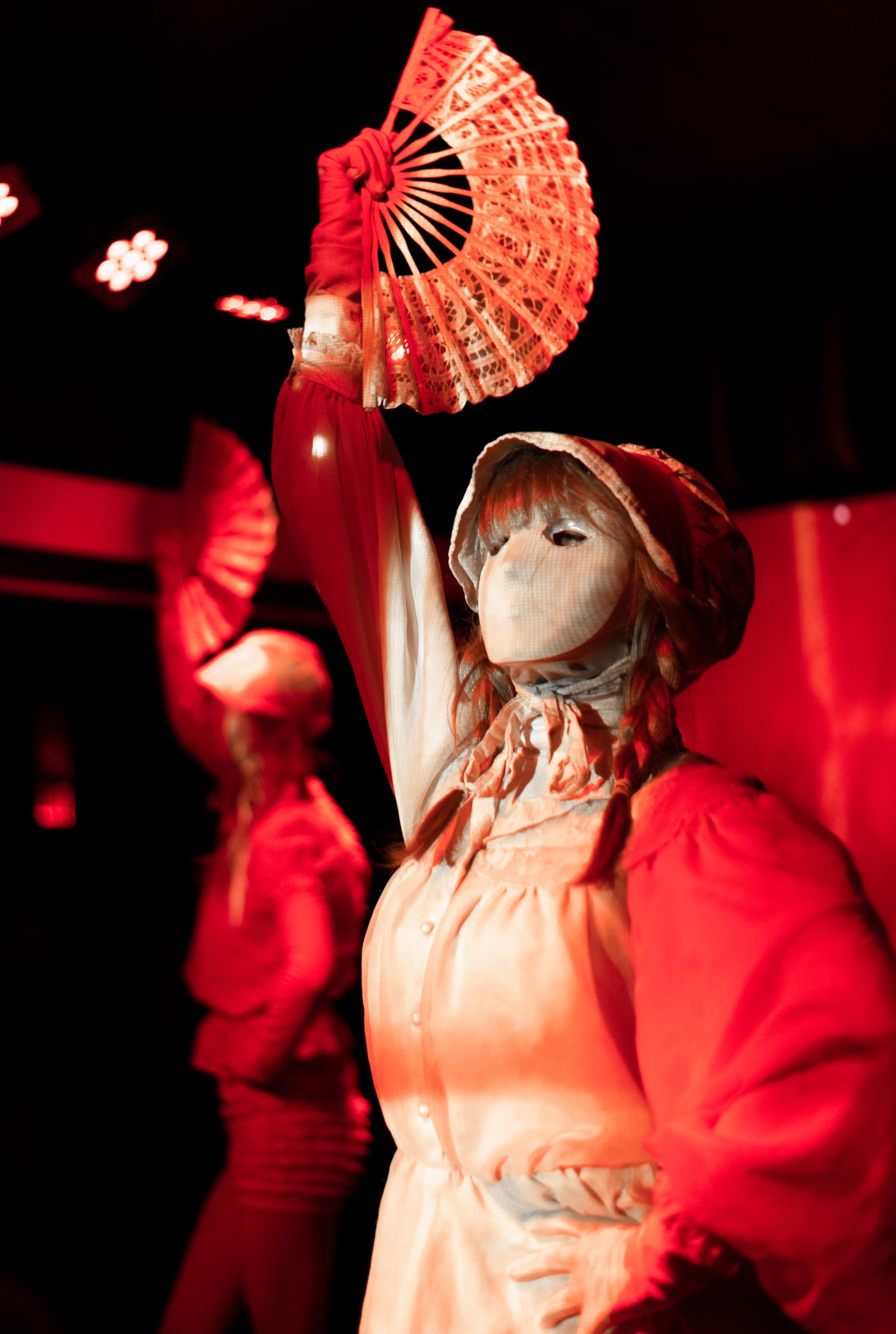
Photo by Geffen Shichor.
Our Interview
Allyson Nobles caught up with Jonathan Bree ahead of his SoCal stops to learn more. The interview has been edited for clarity.
LA Canvas: Hey Jonathan, thanks for taking the time to answer some questions! How is the tour going?
Jonathan Bree: It’s been special. Touring the US a decade after my last project faded into obscurity is unexpected and at times dreamlike.
LAC: You’re up in the Pacific Northwest right now at the perfect time. Are there any particular events or highlights from the road that have been inspiring for you?
JB: Absolutely, beside the stunning fall time scenery, I fed figs to some wild deer from a tree on a front lawn in Washougal. I’ve also got to catch up with old friends I haven’t seen in years. We are currently driving through Montana which is majestic.

Photo by Geffen Shichor.
LAC: Who is on the road with you? Any new or familiar faces? How is that dynamic working out on the road as well as on the stage?
JB: The family are a party of eight travelers currently. The live band is only eighteen months old. We have a very new driver though; funnily we just worked out that our respective old bands partied together one night in a hotel in London 2003. You put any humans in a van for weeks on end you get the odd petty issue, we all have pretty good chemistry though. We are family.
LAC: You have quite a following and history with The Brunettes, and I can imagine that is reflected in many aspects of your music and touring experience. How do you feel you’ve changed since those years and how do you approach your set, musicality, and audience pertaining to those changes?
JB: We are talking about two very different projects. The previous project relied heavily on the onstage chemistry between Heather and myself. The solo set is a multimedia experience. Someone recently described it to me as blurring perceptions of what is real and what is fantastical.
LAC: Your album Sleepwalking is quite the formidable venture compared to your previous two solo albums. What were some of your inspirations this time around?
JB: Thanks. At the risk of demystifying the album, personally it was very much business as usual. Toiling away in the home studio. Some tracks had been around for years others formed in the months of the completion process. I was further exploring the orchestral and slightly Avant-Garde elements of the previous album, this time within songs with more of a pop structure.
https://www.instagram.com/p/B45dTvTp3MP/
LAC: The surreal pop vibe is so pleasantly pervasive throughout, and especially on the tracks you’ve shared with Princess Chelsea, Clara Viñals, and Crystal Choi, what were the incentives in the female elements on those tracks?
JB: I’ve always enjoyed writing with other voices in mind. Theirs are all very unique and compelling. I suppose with the first few solo albums I made an effort to not confuse things and focus on featuring my voice only.
LAC: It’s been said that you’ve “made high art of pop” (Pop Bollocks) – how do you feel about this statement? You occupy an interesting space in genre-bending multiple forms and aesthetics. What would you say is the genre you most seek to challenge and contort?
JB: That’s complimentary isn’t it. I don’t know. I’m not seeking to challenge and contort anything but I appreciate that it’s not as well mined a palette as others in contemporary pop music. I just produce to make things sound interesting to my ears. I get so bored of so much I hear out there.





































































































